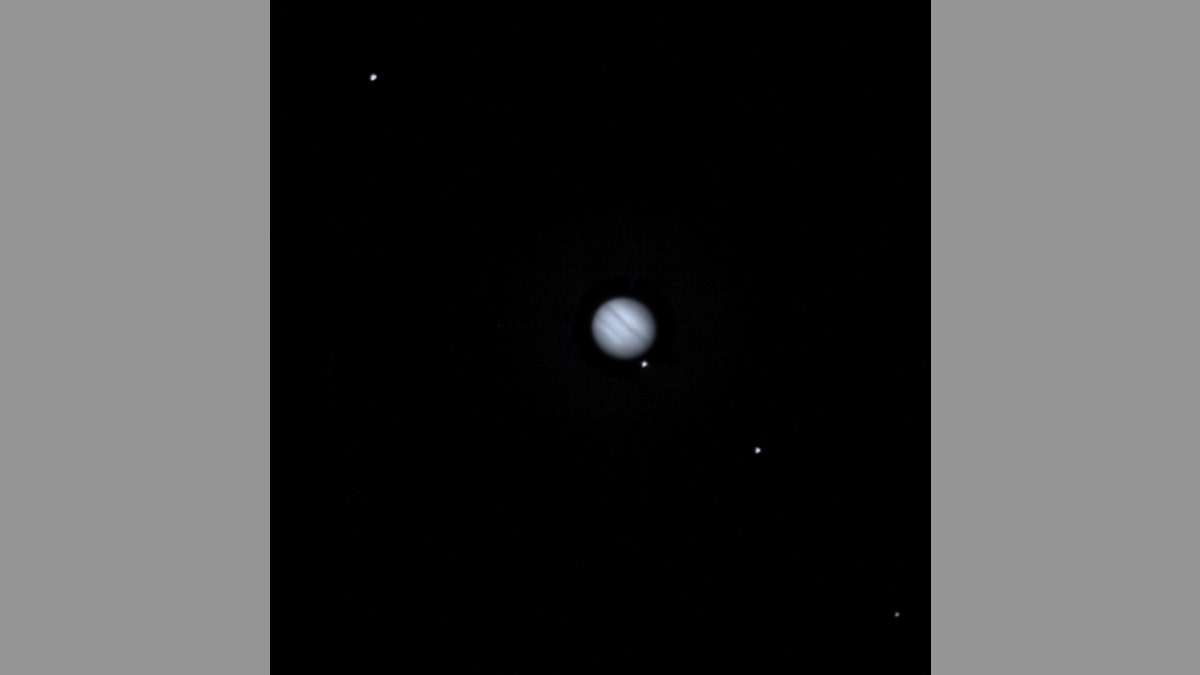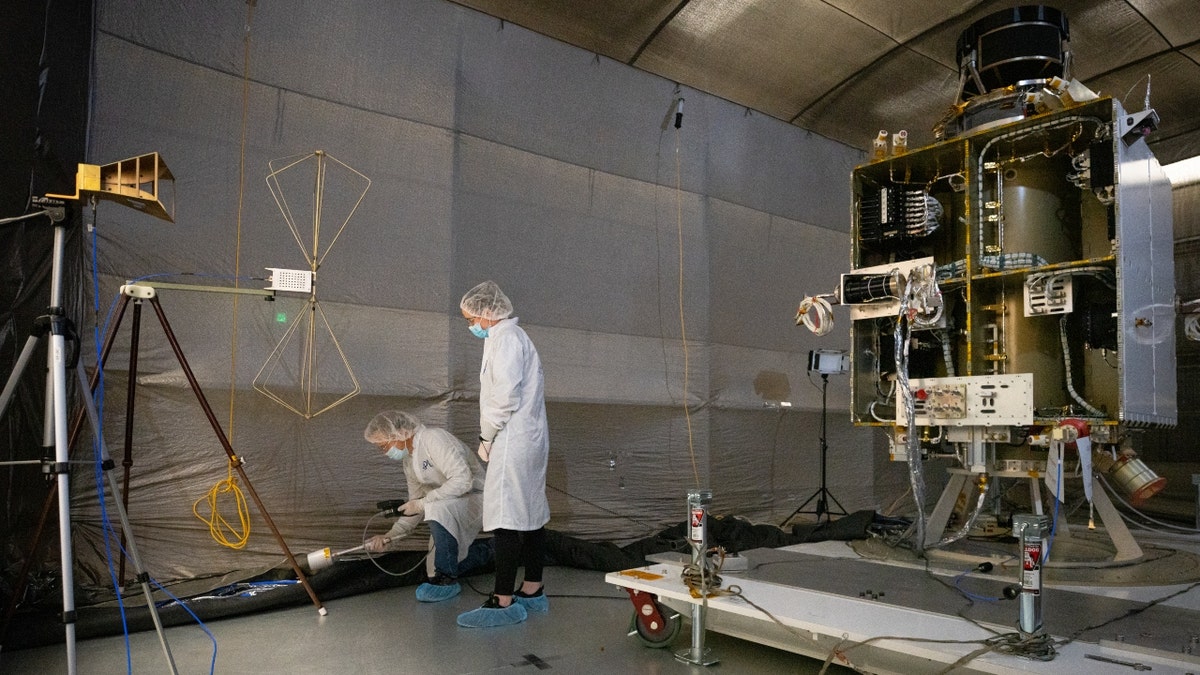NASA DART mission to test-crash spacecraft into asteroid
'The Ordinary Spaceman' author Clayton Anderson explains how the DART Mission could protect our planet from cosmic forces in the future.
The NASA Double Asteroid Redirection Test (DART) spacecraft is expected to deliberately crash into a faraway asteroid on Monday.
The mission is humanity's first attempt to change the motion of an asteroid in space by intentionally crashing a spacecraft into it.
The agency says the target asteroid, Dimorphos, is not a threat to Earth and the "perfect testing ground" to see if the asteroid deflection method would be a viable way to protect the planet should an asteroid on a collision course with Earth be discovered.
The small moonlet orbits a larger asteroid called Didymos, lapping it around every 11 hours and 55 minutes.
JAMES WEBB SPACE TELESCOPE CAPTURES STUNNING IMAGE OF NEPTUNE, RINGS

Illustration of NASA’s DART spacecraft and the Italian Space Agency’s (ASI) LICIACube prior to impact at the Didymos binary system. (Credits: NASA/Johns Hopkins APL/Steve Gribben)
The kinetic impact into Dimorphos, which is nearly 7 million miles away from Earth, should shave about 10 minutes off that.
The DART spacecraft will slam into the 2,500-foot asteroid at 14,000 miles per hour and cameras and telescopes will watch the crash – though it will take days or weeks to figure out if it actually changed the orbit.
The $325 million-dollar planetary defense test began when DART launched last fall.
DART has a single instrument, the DRACO (Didymos Reconnaissance and Asteroid Camera for Optical) navigation imager.

A cropped composite of a DRACO image centered on Jupiter taken during one of SMART Nav’s tests. DART was approximately 16 million miles (26 million km) from Earth when the image was taken, with Jupiter approximately 435 million miles (700 million km) away from the spacecraft. (Credits: NASA/Johns Hopkins APL)
DRACO supports the spacecraft's autonomous guidance system, or SMART (Small-body Maneuvering Autonomous Real-Time Navigation) Nav, to guide it to impact.

DART team members (from left) John Schellhase, Emory Toomey and Lloyd Ellis of APL inspect the radial line slot array (RLSA) antenna before installing it on the spacecraft. (Credits: NASA/Johns Hopkins APL/Ed Whitman)
The imager has snapped thousands of pictures of stars, giving the Johns Hopkins Applied Physics Laboratory (APL) team leading the mission for NASA's Planetary Defense Coordination Office the necessary data to support ongoing testing and rehearsals.
NASA SPACECRAFT TO SMASH INTO ASTEROID TO TEST PLANETARY DEFENSE
In addition, the DART spacecraft's "mini-photographer" LICIACube and its two optical cameras successfully deployed on Sept. 11.
At the beginning of the month, the 1,260-pound spacecraft got its first look at Didymos.

The DART spacecraft undergoes electromagnetic interference testing; from left, Alan Busbey performs measurements with Jackie Kilheffer overseeing the process. (Credits: NASA/Johns Hopkins APL/Ed Whitman)
An hour before impact, Dimorphos, at 11 billion pounds, will emerge as a point of light, becoming larger and larger in images.
Managers are confident DART won’t smash into the larger Didymos by mistake because the spacecraft’s navigation is designed to distinguish between the two asteroids and target the smaller one.

This image of the light from asteroid Didymos and its orbiting moonlet Dimorphos is a composite of 243 images taken by the Didymos Reconnaissance and Asteroid Camera for Optical navigation (DRACO) on July 27, 2022. (Credits: NASA JPL DART Navigation Team)
Unless DART misses – there is a less than 10% chance – it will be the end of the road for the spacecraft.
CLICK HERE TO GET THE FOX NEWS APP
If it does, it will encounter the asteroids again in a couple of years for a second shot.
NASA says there is no chance that either asteroid will threaten Earth now or in the future and no known asteroid poses a threat.
The Associated Press contributed to this report.





















